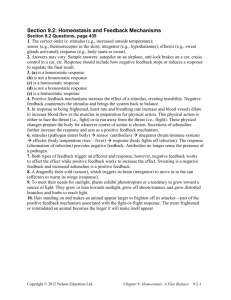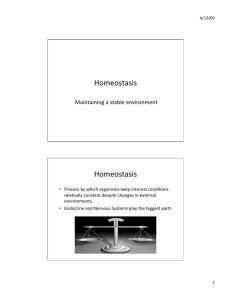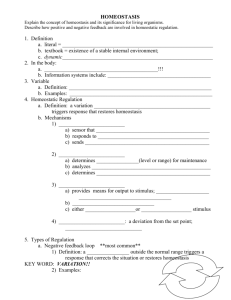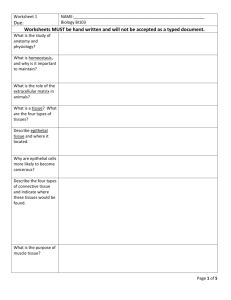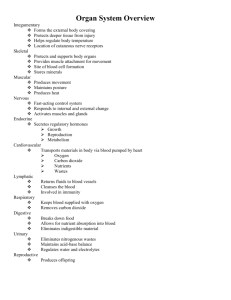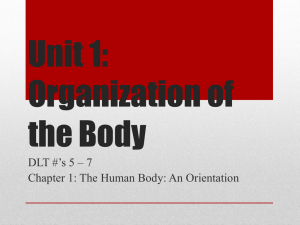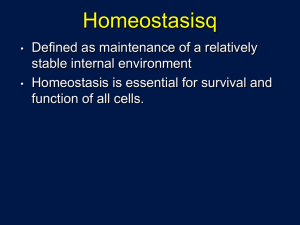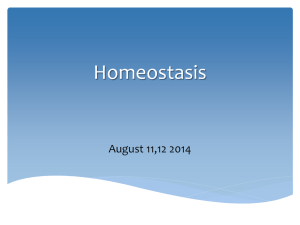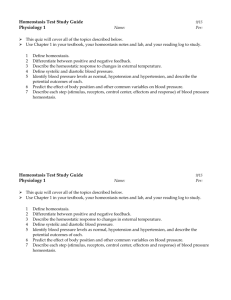Mechanisms of Homeostatic Control
advertisement
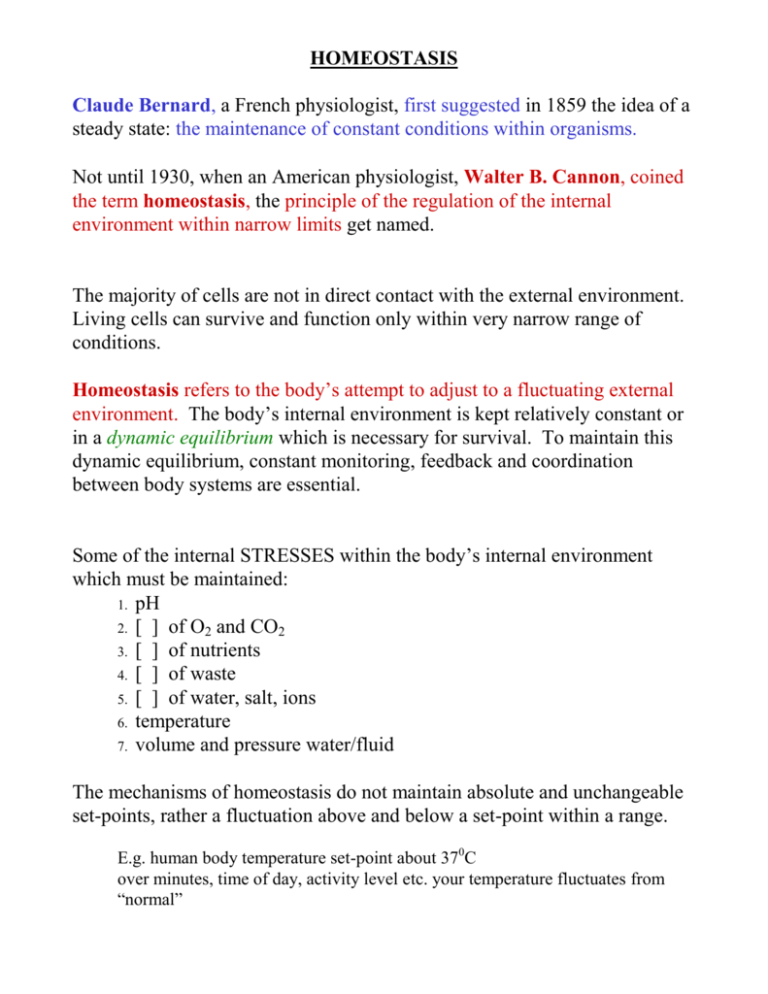
HOMEOSTASIS Claude Bernard, a French physiologist, first suggested in 1859 the idea of a steady state: the maintenance of constant conditions within organisms. Not until 1930, when an American physiologist, Walter B. Cannon, coined the term homeostasis, the principle of the regulation of the internal environment within narrow limits get named. The majority of cells are not in direct contact with the external environment. Living cells can survive and function only within very narrow range of conditions. Homeostasis refers to the body’s attempt to adjust to a fluctuating external environment. The body’s internal environment is kept relatively constant or in a dynamic equilibrium which is necessary for survival. To maintain this dynamic equilibrium, constant monitoring, feedback and coordination between body systems are essential. Some of the internal STRESSES within the body’s internal environment which must be maintained: 1. pH 2. [ ] of O2 and CO2 3. [ ] of nutrients 4. [ ] of waste 5. [ ] of water, salt, ions 6. temperature 7. volume and pressure water/fluid The mechanisms of homeostasis do not maintain absolute and unchangeable set-points, rather a fluctuation above and below a set-point within a range. E.g. human body temperature set-point about 370C over minutes, time of day, activity level etc. your temperature fluctuates from “normal” Theory of Communication and Control To maintain homeostasis the body must be able to recognize stress and respond to it. There are three components to a homeostatic control system: 1) sensor 2) integrator 3) effector Stress – change in environment, provides a stimulus Stimulus – something that sets the system off, detects the stress Sensors – specialized cells to pick up stimulus; change in the environment; located in various organs Afferent nerves – input message is carried along nerves integrator – a relay point where bits of information are pulled together i.e. brain and spinal cord Efferent nerves – output message is carried along nerves Effectors – signals are sent to muscles or glands which carry out appropriate responses to restore “normal” balance; set point response – leads to a change, change is fed back to sensor Feedback Mechanisms Many homeostatic controls work through feedback systems to make adjustments and bring body back within an optimal set-point. Negative Feedback - mechanisms are activated to restore original condition - mechanisms trigger a response that reverses the changed condition - most common e.g. thermostat when temperature drops below the set point the furnace turns on when temperature rises above the set point the furnace turns off thermometer – sensor with a set point thermostat – intergrator furnace – effector Positive Feedback - an increase in a substance or activity eventually leads to more of an increase - a small effect is amplifies the original input moving it even further from set-point - less common e.g. birth of a baby hormone oxytocin causes contractions of the uterus, this then causes the cervix to stretch triggering more oxytocin to be released causing more contractions and more stretching
